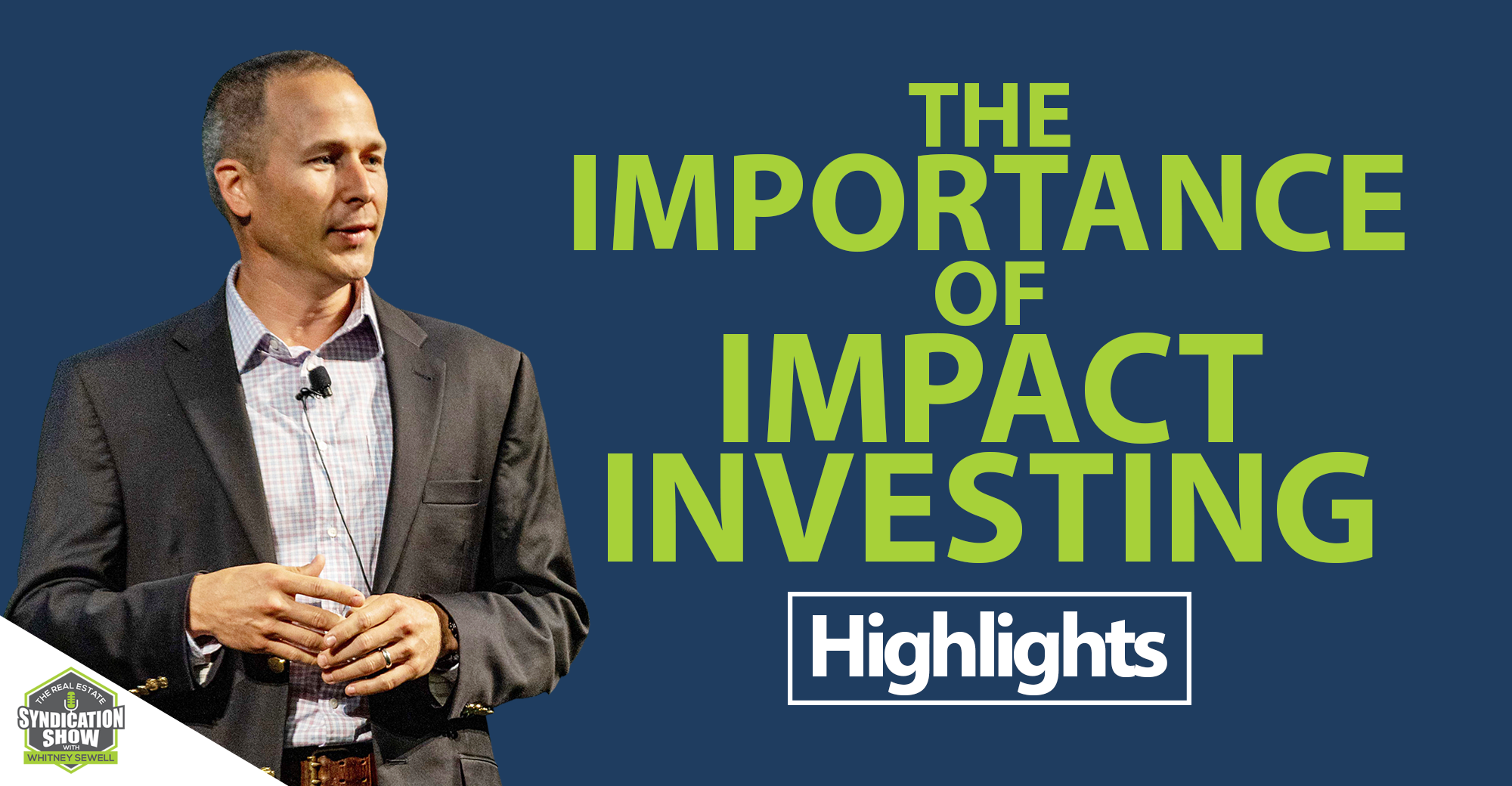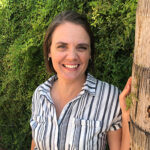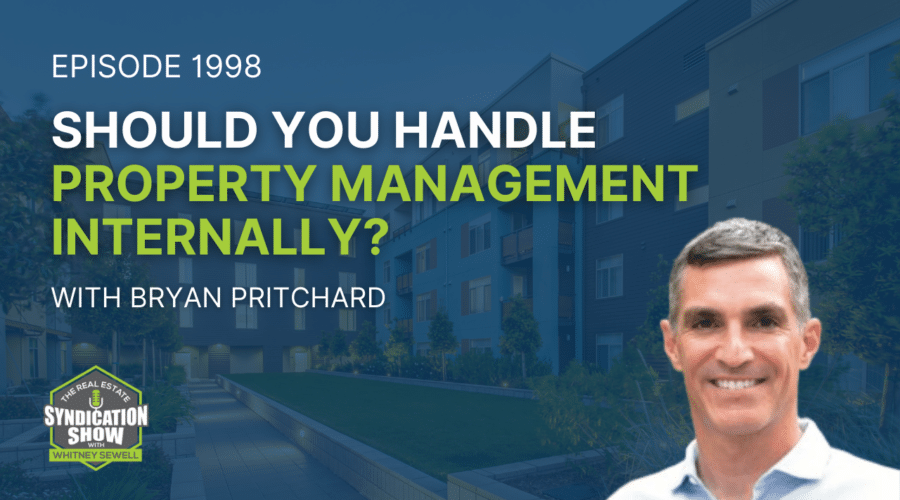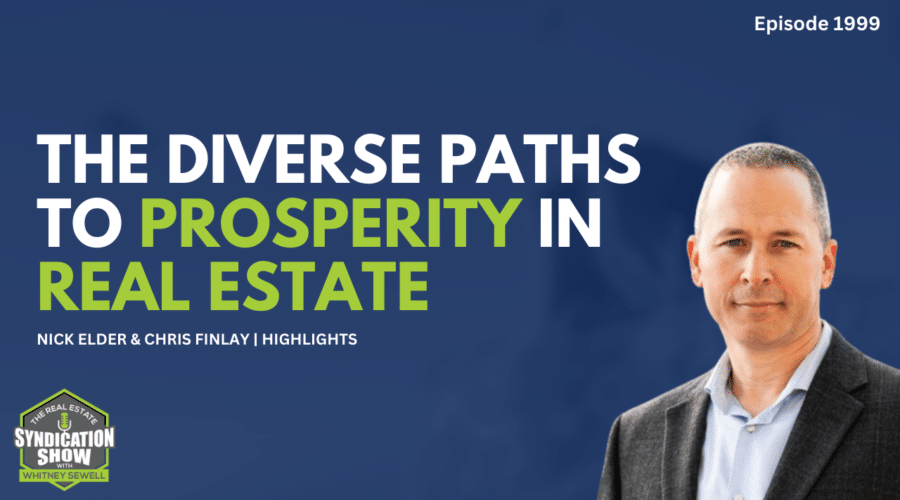One main goal when you are investing in a real estate deal is to gain financial returns. But, did you know that there is a way that you can also create an impact in society as well as the planet when you invest? In this #Highlights episode, we look back at our conversations that focused on impact investing and why it is important to consider doing this right now.
Our gracious sponsor:
PassiveInvesting.Com
How do you make sure that you are investing with a “good” operator? Dan Handford and his wife are currently invested in 54 different passive real estate syndications with 16 different operators in 10,000+ doors. They use this exact list when deciding whether or not to invest with a particular group. Get access to the “7 Red Flags for Passive Real Estate Investing” to be confident in your next investment! https://www.passiveinvesting.com/redflags/
Watch the episode here:
Listen to the podcast here:
The first conversation we feature is with Ari Sznajder of Kapel Group Real Estate. Ari shares that he is focused on finding deals and partnering with local government and like-minded investors to help revitalize communities. The second conversation that we will feature today is with Camilla Jeffs of Steady Stream Investments. Camilla explains how making a profit and having a positive social and environmental impact are not mutually exclusive. Enjoy the show and learn about impact investing!
Key Points From This Episode:
- Ari takes us through a case study on the social impact of real estate investing and how to get involved with local government.
- How Ari formed and nurtured his relationship with local government.
- We discuss Ari’s business plan and some details he ran into while completing the deal.
- A tenant appreciation party and how they turned a building and community around.
- Camilla explains the investing trifecta that characterizes purposeful investing; profit, people, planet.
- Why people are investing less in charities and doing more impact/conscious investing.
- How Camilla began her impact investing career with section eight tenants in single-family homes.
- Camilla’s decision to move to multifamily and assisted living investing because of the positive impact this could have on a greater number of people.
Tweet This!
“If I’m ever making a big investment in a community, I like to understand who the main players are in that community from a local government perspective. What are the big employers? Then I just nurtured it in that relationships, set up meetings like, “How can I help you guys out? What are you guys trying to achieve with the city?” – Ari Sznajder
“We really want to make the residents feel safe and secure in this building, and we had a tenant appreciation party to really say what’s going to happen in the building. So it was really like a building turnaround. We really felt that we had an impact in the community and these people’s lives.” – Ari Sznajder
“What’s a purposeful investor? Well, it’s someone that invests not just for profit but people and the planet as well.” – Camilla Jeffs
“We loved the idea of being able to invest in a home and provide a basic necessity of life for someone who needed that, right? Single mom, three kids, couldn’t quite make rent on her own but the government was able to help.” – Camilla Jeffs
“Yes, we want to go back to our investors and tell them about the profits that we’ve earned and how we’re doing on those profits. But we also make sure that they know what kind of social impact that we’re creating and so we’ll measure things like that and then, of course, the environmental impact as well.” – Camilla Jeffs
Links Mentioned in Today’s Episode:
WS751: SOCIAL IMPACT Real Estate Investing with Ari Sznajder
WS825: Being A Purposeful Impact Investor with Camilla Jeffs
About Ari Sznajder
Ari worked for 12 plus years as a marketing executive across Blue Chip consumer goods companies like Hershey and Kraft before recently achieving financial independence through Real Estate Investing. He achieved that through more than 5 years of self-directed Real Estate education, mentorship, finding his niche, and most importantly TAKING ACTION. Ari is focused on multifamily in Pennsylvania and enjoys partnering with others to help revitalize communities, amplify returns and create win-win ventures. Go to kapelrealestate.com/socialimpact to see the full story and learn why social impact real estate investing will become even more important in the future.
About Camilla Jeffs
Camilla Jeffs is passionate about financial education, building wealth, and living a life by design. With 18 years of experience investing in real estate, she now provides investment opportunities for others to achieve passive income through investing in apartments and senior housing. Camilla believes in the investing trifecta, where one can achieve not only strong financial returns, but create social and environmental impact by providing safe, clean, and affordable housing to entire communities. Camilla is a triathlete, an outdoor enthusiast, and a devoted mother to her five amazing children.
Full Transcript
EPISODE 1176
[INTRODUCTION]
0:00:010
Whitney Sewell (WS): This is your Daily Real Estate Syndication Show and I’m your host, Whitney Sewell. Today is a Highlights show that’s packed with value from different guests around a specific topic.
Don’t forget to like and subscribe but also go to LifeBridgeCapital.com where you can sign up to start investing in real estate today. I hope you enjoy the show!
[INTERVIEW 1]
00:00:23
WS: Our guest is Ari Sznajder. Thanks for being on the show, Ari.
00:00:27
Ari Sznajder (AS): Thanks for having me, Whitney. Excited to be on the show.
00:00:30
WS: I think it’s an interesting topic when we think about partnering with local governments or communities. It’s a way that there are potential deals sitting there, and a lot of us don’t even know to look there or who to communicate with. So, yeah, get us started. Let’s hear about it – Why don’t we back up just a little bit though? I like how you said everyone has an expiration date in the corporate world. I thought that’s an interesting quote. It’s so true.
Just quickly though, what pushed you into real estate? You had this corporate job that most people probably would’ve said, “Ari, it’s a great job. Why are you giving that up, right?” What pushed you into real estate?
00:01:03
AS: What pushed me into real estate is really I always had kind of an entrepreneur vibe about me and things that I wanted to do. And after 12 years in corporate America, you kind of – it took me a while to understand that it was good. I did fine. But it really wasn’t the thing that was for me, right? It wasn’t my calling. The things that my superpower, what I was good at, was learning new things, flexing, making connections with other people like relating to – you look at real estate investors that are typical that they’re good with their hands, they are very DIY and things like that. I was good at relating to banks, selling the vision after having worked in marketing innovation for many years.
And because I’m in Central Pennsylvania, really a logical place was real estate investing because we have such undervalued real estate here. Yet we have population growth, economic growth, so that was really a no-brainer. Had I lived in New York City or maybe San Francisco, maybe I wouldn’t have gone into real estate. But really it was a condition of my situation and where I became an accidental landlord after trying to sell our house, but we didn’t. We just placed a tenant and we had a good experience.
00:02:10
WS: Nice, okay. I hear that often where somebody became an accidental landlord. Then it’s like their eyes were opened to the possibility here. Let’s jump into this case study that you have for us because I want the listener to be able to understand more about this because there may be an opportunity like this in their backyard as well.
00:02:26
AS: Absolutely. So basically, what we did, we find out about this apartment complex deal, and many investors didn’t want to touch it because it was kind of in a rough area. The tenants were urinating in the basement, smoking marijuana in the basement. It wasn’t a very nice building. We went ahead with it and we closed on it. We cleaned it up. We put in security cameras and kind of transitioned the building a little bit.
But right next door was a pawnshop that we inherited, a pawnshop tenant. We were not initially planning to change that tenant but we saw that they were kind of attracting crime. I had met with the mayor and the Chamber of Commerce to see how we can make an impact in the community. One of the things they didn’t like is that particular store because it was attracting crime. People would sell stolen items there and things like that. So we decided, “What kind of partner would a city like? What sort of business would be good there because it was in the downtown of the city in a very prominent location?”
And really — and of course, this is kind of pre-COVID, but they were really looking for the experiential sort of business, right? The sort of business that people come and eat and interact with and things like that. So really we found and operate — so before that, the pawnshop tenant not only was attracting crime but also was not performing very well as a tenant. He went through bankruptcy. We went through a very long eviction process with bankruptcy and lawyers and everything like that, a very costly process. But we turned it over, we spent a lot of time searching for sort of the right tenant, and then we identified an operator, experiential — it’s kind of a rolled ice cream shop that we were able to place there. We did a big ribbon-cutting ceremony. And the city and everyone was really excited to have that sort of business in the downtown in the city.
00:04:09
WS: Nice. Tell me about your relationship with the local government, say, before you found this deal. How did you already have that relationship? How were you communicating with them through this process to even know? I mean, to really get them on board. Otherwise, they could’ve seen you as this landlord that’s allowing these people here, but it sounds like you already had a relationship and you were working with him to say, “Okay, I realize this is maybe a tenant that no one wants here,” and it’s neat that you recognized that that tenant was attracting other tenants that you didn’t want. But what was your relationship with the government, say, before you purchased this deal and what does that look like to nurture that relationship?
00:04:45
AS: In this part of Central Pennsylvania, these are towns that have been established in 1730. They’ve got a lot of history. A lot of them kind of in the ‘80s and ‘90s had an economic downturn, would steal, leave town, and things like that. But now, this region is kind of emerging as a Northeast transport corridor, so a lot of these mayors and Chamber of Commerce folks do a lot of outreach. So actually, the mayor came to a local real estate meet up and so did the Chamber of Commerce executive. So I met with them, talked with them, form a relationship because if I’m ever making a big investment in a community, I like to understand who the main players are in that community from a local government perspective, what are the big employers.
Then I just nurtured it in that relationships, set up meetings like, “How can I help you guys out? What are you guys trying to achieve with the city?” They’re really trying to help revitalize the downtown that has gone down for a while. Now, it’s kind of coming back with new businesses and more investment. It’s really we want to partner together because I think as multifamily operators especially like you’re seeing a lot of times in the news and the way how real estate investors are perceived or landlords are perceived. A lot of us want to really improve the communities because it’s good for the community. It’s good for investment too. So we really felt to nurture those. But I had no pre-existing in terms of like personal. It was just that they went to a real estate meet-up, the mayor and stuff, and they had a lot of outreach. I think they did a good job of bridging the gap with real estate investors.
00:06:12
WS: So the people in the community were reaching out and connecting with you all. That’s great, I mean if they’re proactive in that way. I don’t feel like that’s always the case. But too, depending on the size of the town, that may be difficult too, depending on what they’re capable of or just the time available that they have. But tell me a little more about this property a little bit. How many units? It sounds like there were residential units, but maybe there’s a commercial unit as well? Or was it just a larger tract that had different buildings?
00:06:39
AS: This is a 20-unit apartment building. We bought also the building next door and the building next door eventually after that because one of the things that we’re looking to do is buy abandoned buildings, redevelop them, put units in commercial spaces. So when we bought it, it was about 20 units. When we’re done, it’s going to be 30 units, right? So we’re going to be putting in totally new apartments and placing commercial tenants and really focusing — we’ve got like this block right here, so that’s kind of the size of it.
It’s interesting because obviously if I was in a place like Dallas or a larger market like the mayor wouldn’t talk to you, wouldn’t care, and harder to have an impact. But a lot of times, in these smaller communities, you can have a larger impact and make a bigger change. That’s one of the things that really attracted me to this area that I’m investing in. But these are places that are growing too from an economic perspective, from a population perspective because, as I said, there’s a highway outside of this town, and 10% of the entire US GDP passes through this highway. The 81 Corridor, it’s about two and a half hours from New York City, an hour and a half from Philadelphia. You can get to Baltimore in about an hour and a half, two. So this is a big area in terms of job growth. And a lot of the e-commerce providers, want next-day delivery in these big markets. This area is emerging, so it’s really emerging as a good place to invest.
00:07:57
WS: So you found this property, you connected with the local authority or local government leaders at REI club or meet up, real estate meet up, and when you purchase this property. There are issues. Give us some more of just the details you ran into and just maybe your business plan and how – Anything that you ran into along the way.
00:08:14
AS: Yeah, absolutely. So when we first took over the building, we had two bedrooms they were probably renting at about 550. We went in there and we probably turned about 85, 90% of the units’ new paint and flooring. Now, a two-bedroom is renting at $850 a month, so we significantly increased rents. We put storage in the basement. We improved the common areas. We put in security cameras. We really want to make the residents feel safe and secure in this building, and we had a tenant appreciation party to really say what’s going to happen in the building. So it was really like a building turnaround. We really felt that we had an impact on the community and these people’s lives. But, yeah, we also improved the value of the building significantly by doing so.
00:09:00
WS: A tenant appreciation party, that’s so interesting. Just to really show them that they’re like new mayors in town or new sheriff — that you appreciate them too. But tell me a little about how some of that was perceived by them. Were you able to keep any of the old tenants or did you completely have to almost do a complete turnover?
00:09:17
AS: When we took over the building, there wasn’t a lot of what we feel tenant community cohesiveness, right? So not a lot of the tenants got along because there were some folks in the building that were using drugs, and you had some people that were families and stuff like that, and they tried to keep a little bit separated. I got some feedback that some people didn’t feel very safe in the building, so we put in the security cameras. And it was pretty much a large turnover of most of the people we had to turnover.
In terms of how we were proceeding, the building had been known for a long time by kind of an absentee landlord that didn’t really do much and kind of let the building go. The first thing we did is — when we had the tenant appreciation party, we said, “Hey, what is the feedback? What do you like about the building and what would you like to change?” After we had that tenant appreciation party, we said, “You wanted to change this, boom, we changed it.” We made that improvement. Part of it was the parking lot and lines in the parking lot — there was chaos in the parking lot, so that’s one of the things that we changed. Now, we can charge rent for the parking spaces, for example. We really showed that this is what you asked for. This is what we delivered. You didn’t feel safe. Hey, we’re going to make some turnovers on some of the folks that are living there.
[INTERVIEW 2]
00:10:29
WS: Our guest is Camilla Jeffs, thanks for being on the show this morning Camilla.
0:10:34
Camilla Jeffs (CJ): Thank you, Whitney, so excited to be here.
0:10:36
WS: Yeah, Camilla is a purposeful investor, seeking to create impact by bringing like-minded investors together to provide safe, clean, affordable housing for tenants through apartments and assisted living communities. She’s a mother of five beautiful children and enjoys physical activities.
Camilla, thanks for being on the show. I like getting into this topic and impact investing or you know, just things like that. It’s kind of a new concept it seems but it’s something I think we should all be thinking about. You know, let’s jump into your focus in real estate and just what this means to you, and let’s dive in.
0:11:09
CJ: Sure, yeah. My focus currently in real estate is apartment buildings and assisted living. Those are the two things that I’m really excited about and one of the reasons is that I am a purposeful investor. Now, what’s a purposeful investor? Well, it’s someone that invests not just for profit but for people and the planet as well.
We have those three Ps. I call it the investing trifecta and I think that it’s a really great way to be able to invest. When I first started exploring this type of investing, I wondered, can you really get a good financial gain if you’re investing in things that are good, right?
As I was exploring this, I was talking to a friend of mine who has been in the nonprofit sector for a long time. She said, “You know what’s happening Camilla? People are not investing or are not donating to charities nearly as much as they used to.” She said, “One of the reasons why is because they are a bit skeptical of charities using the money in the right way, right?” There’s been trust that has been lost with some charities. She said, “Instead, what’s happening is there’s a new concept called impact investing.”
I just heard about this about four or five years ago and she said, “When you invest, you’re actually investing in a company that’s doing good in the world, but you’re also getting a financial return.” I thought, “Wow, that is brilliant,” because we’ve been living in this era of conscious consumers and the conscious consumer is someone who wants to buy organic, who is interested in investing in companies that are doing good and not creating bad things in the world, right? Creating a better environment for us, some kind of social impact, etcetera. That is starting to evolve into the era of the conscious investor.
I love that this is coming along and it’s pretty amazing what’s happening.
0:13:08
WS: Awesome. Well, yeah, it is kind of a new concept for many I think, or to think about this. But I know, even before I got into real estate, I was thinking about okay, “How do I invest, how do I grow a retirement fund or what does that look like, many years ago.” But even then, you know, I was made aware of well, you don’t know where those funds are really being invested, you know? You don’t have control over, really, what you’re supporting.
I struggled with that, I’m like, “Wait a minute, I want to know what I’m investing in and ultimately, what I’m promoting with my dollars,” right? I mean, I love that you know, how we can do that in real estate just like you’re talking about. Let’s jump into that, being a purposeful investor and as far as the people and the planet, what that looks like, and maybe you can give us some examples?
0:13:50
CJ: Yeah. What that looks like, let’s take multifamily for an example. About 15 years ago, when I started investing in real estate, I focused on single-family homes. With my single-family homes, we allowed section eight tenants to live there. What’s a section eight tenant? Well, it’s someone who needs some government assistance in order to make their rent.
We loved the idea of being able to invest in a home and provide a basic necessity of life for someone who needed that, right? Single mom, three kids, couldn’t quite make rent on her own but the government was able to help.
We felt good about being able to provide housing like that. Now, as we were doing that, I wondered, “How can I create an even bigger impact,” right? I can do that one single-family house at a time. But then, when I started learning about how to actually acquire apartment buildings and get involved with multifamily I realized the impact we could have is a hundred X, right?
If we buy one apartment complex that has a hundred units in it and we focus on the people, we focus on keeping that rent affordable so people can afford it in the market, not trying to be at the highest rent of the whole neighborhood.
Then, creating a community feel so that people drive up to flowers when they get there instead of garbage, right? There are some really interesting things that we can do for social impact to create those neighborhoods and communities.
Now, for environmental impact, this is also another one that’s really exciting because we can go into an apartment complex and we can replace all of the faucets and fixtures and toilets and put in low-flow ones so we are saving water.
The cool thing about it, you know, back to that, “Can you really get a financial gain if you’re doing good for the environment?” Well, you absolutely can because when we install things like that, it reduces the amount of water that is consumed, helping the environment, and then also, it reduces your utility bill, helping your profit.
Those are some of the things that you can do in the multifamily space and I love that about creating impact in all three of those areas.
0:16:05
WS: Yeah, I mean, just replacing all the water receptacles like you’re talking about, yeah, it’s either going to save you money or your tenant, most likely, right? One or the other, whoever is paying that bill. Is there maybe an example recently where you all have been able to apply some of these things or maybe some things that have come out of that, you know, as far as you seeing tenants that have been helped or investors who love investing in this way?
0:16:27
CJ: Yeah, in fact, I was talking to an investor just last night and she was telling me that she’s in the medical field and she was asking, “How can I invest and have more purpose?” We started talking about assisted living and things I’m working on in the assisted living space.
She was so excited about that because she says, you know, “This is exactly what I want to do, I want to put my money into something that’s going to help out in the medical field and be able to invest in the medical field.” As I talk to different investors, they’re ecstatic about the ability to invest with purpose and to see those social returns as they are investing.
0:17:08
WS: How do you see the best way to even share with those investors the things you’re doing or just the ways that their investments are benefiting others and the planet?
0:17:18
CJ: Yeah, we hold that as one of our metrics, I mean, one of our KPI’s in the business. Yes, we want to go back to our investors and tell them about the profits that we’ve earned and how we’re doing on those profits. But we also make sure that they know what kind of social impact that we’re creating and so we’ll measure things like that and then of course the environmental impact as well.
We have those measurements in the business and the other thing I do is just make sure that I partner with other people who have the same vision in what they want to build. Because, we know in the multi-family, commercial real estate world, it’s not a “One person does it all,” and so, my job is to educate investors on what we’re doing and then I partner with very strong established operators who have the same type of vision and purpose that they want to achieve.
[END OF INTERVIEW]
[OUTRO]
00:18:09.0
Whitney Sewell: Thank you for being a loyal listener of The Real Estate Syndication Show. Please subscribe and like the show. Share with your friends so we can help them as well. Don’t forget, go to LifeBridgeCapital.com where you can sign up and start investing to real estate today. Have a blessed day!
[END]
Love the show? Subscribe, rate, review, and share!
Join the Real Estate Syndication Show Community:






